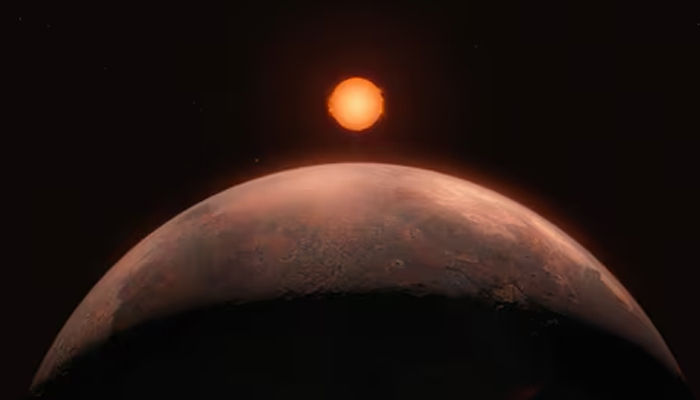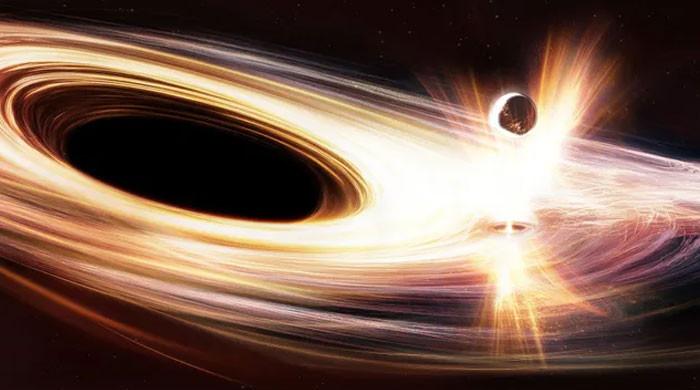Cosmic object may have altered trajectory of four solar system planets: study
None of the planets orbiting the sun have perfectly circular orbital paths or lie on same plane
January 23, 2025

A planet-size object possibly once visited our solar system and may have permanently changed the cosmic neighbourhood by distorting the orbits of the four outer planets, a new study suggests.
These findings can answer why certain planets' paths have certain peculiar features.
The formation of the solar system's planets has been a subject of debate but still, most agree that the orbit of the planets should be in circles that are arranged concentrically around the sun and lie on the same plane.
However, none of the planets orbiting the sun have perfectly circular orbital paths and the paths don't even lie on the same plane.
Compared with Mercury, the paths of the four outer giant planets, Jupiter, Saturn, Uranus and Neptune minorly deviate from the ideal orbital shape.
A planetary scientist at the University of Arizona and a co-author of the new study, Renu Malhotra, remarked that explaining these niggling discrepancies has been challenging.
"The puzzle for theoretical astrophysics has long been to figure out how the orbits later became out-of-round and tilted from their mean plane by not too much and not too little," she wrote in an email to Live Science.
The previous hypotheses and research focused on how interactions between these planets reshaped their orbits, Malhotra said that they are not consistent "with certain important details of the observed orbits".
To overcome this debacle, Malhotra and her colleagues considered a less-examined and thought about scenario that around four billion years ago, a star-size object visited the solar system and tweaked these planets' paths.
The team carried out 50,000 simulations of such events, using computer models of the four outer planets, each over 20 million years. They altered parameters of each of the visiting objects including their mass, speed and how closely they flew by the sun.
Although most of the simulations run by the team created situations very unlike the current layout of the solar system, the researchers found that in approximately 1% of the simulations, the planet-sized object's path altered the orbits to approximately their current state.
The visitors in 1% of simulations dove straight into the solar system, travelling past Uranus' orbit and some even grazed Mercury's path and they ranged from two to 50 times the mass of Jupiter.
"This range includes planetary masses to brown dwarf masses," Malhotra said.
Because many simulations had the planet-like object swooping through the inner solar system, the researchers created an additional 10,000 simulations and included the terrestrial planets as well.
The objects in these flybys that had previously altered the giant planets' orbits to their present states again created the solar system's current appearance.
The simulations prove that just one object flying by the solar system was enough to alter the planet's orbital path.











